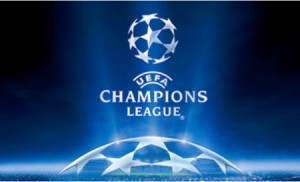The UEFA Champions League, the zenith of European club soccer, is poised for a groundbreaking transformation. Kicking off in the 2024-25 season, the tournament is slated to roll out a restructured format that aspires to reshape the European soccer landscape. What exactly are these alterations, and how will they influence the participating teams, players, and fan base? Let’s explore the specifics.
The Swiss Format: A Paradigm Shift
In a major departure from the conventional group stage, the tournament will embrace the “Swiss format.” The participant count will rise from the current 32 to 36 teams. For now, it’s easier to predict the result of the tournament, and the punters use this opportunity with the fair play download guide at the link, placing bets in the respected bookmaker mobile app. Next season, rather than being divided into groups, the teams will compete in a single league phase. During this phase, each team will participate in eight fixtures—four at their home ground and four away. This expansion in the number of matches offers teams additional avenues to demonstrate their prowess.
Direct Entry and Playoffs: The Revised Route to Success
The league phase will culminate in the top eight teams securing direct entry into the knockout rounds. Meanwhile, those ranked ninth to 24th will face a two-leg playoff series to earn a spot in the last 16. This new arrangement injects an added dose of thrill and uncertainty into the competition.
The Coefficient Conundrum: A Shift in Qualification Criteria
UEFA is moving away from the much-criticized five-year historical coefficients for qualification. Instead, two of the extra four slots in the competition will be awarded based on the collective performance of clubs from a particular nation in the season before. This could mean that leagues like the Premier League could potentially have up to seven teams in the Champions League.
Domestic Rivalries Take Center Stage
In a further innovative step, teams hailing from the same nation can now compete against each other in the initial knockout rounds. This paves the way for heightened local rivalries to make their way into the Champions League arena, infusing the tournament with an additional element of fascination.
Financial Implications: The Rich Get Richer?
UEFA expects a 33% rise in revenue from the revamped Champions League. While this is good news for the clubs, it also raises concerns about the widening financial gap between the big and small clubs, as the new format is likely to benefit the already powerful teams.
The Impact on Other European Competitions
The Europa League and the Europa Conference League will also see similar format changes, making the entire European club competition ecosystem more dynamic and interconnected.
The Soccer World Weighs In: Reactions to the New Champions League Format
The Pundits: A Mixed Bag of Opinions
TalkSPORT host Jim White and outspoken pundit Simon Jordan had a lot to say about the new Champions League format. White criticized UEFA for their “arrogance” in favoring history over achievement, questioning how teams like Liverpool could take precedence over champions from other leagues like Scotland’s Rangers or Celtic. Simon Jordan, on the other hand, accused UEFA of being motivated purely by finances. He stated, “For UEFA, it’s ker-ching. This is about money.”
The Managers and Clubs: Concerns Over ‘Leapfrogging’
The new format effectively creates a ‘safety net’ for Europe’s heavyweight clubs in the event of a poor season. This has raised concerns among Premier League managers who fear it will lead to teams ‘leapfrogging’ higher-placed sides into a more lucrative European competition. If the new format were in place now, a team like Liverpool would still gain a Champions League spot despite being seventh in the Premier League.
The Fans: Risk of Losing Generations
Football Supporters’ Europe (FSE) has expressed concerns about the logistics of accommodating the extra games, especially at a time when football fans’ finances are squeezed due to the pandemic. Ronan Evain, the executive director of FSE, warned that the new format risks “losing whole generations” of supporters.
Athletes: Awaiting the Challenge
While specific reactions from athletes are yet to be widely reported, the increase in the number of matches from 125 to an incredible 225 from the 2024-25 season onwards is likely to have a significant impact on player workload and could be a point of discussion among athletes in the near future.
Conclusion: A Polarizing Change
The new Champions League format has elicited a range of reactions from the soccer world. While it promises more excitement and financial benefits, it also poses risks and has been met with criticism from pundits, managers, and fans alike. As the 2024-25 season draws nearer, the discussions surrounding these changes are expected to escalate.
The strategy presents both opportunities and risks, making it a two-sided blade. While it promises more excitement, games, and financial benefits, it poses risks like diluting the quality of the competition and widening the financial gap between clubs. Only time will tell if this new format is a win-win for everyone involved or a risky bet that could alter the essence of European football.
Read Also: Unveiling the Ultimate Thrill





